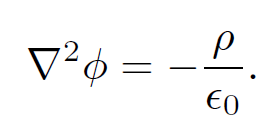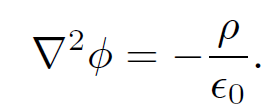
تاريخ الفيزياء

علماء الفيزياء


الفيزياء الكلاسيكية

الميكانيك

الديناميكا الحرارية


الكهربائية والمغناطيسية

الكهربائية

المغناطيسية

الكهرومغناطيسية


علم البصريات

تاريخ علم البصريات

الضوء

مواضيع عامة في علم البصريات

الصوت


الفيزياء الحديثة


النظرية النسبية

النظرية النسبية الخاصة

النظرية النسبية العامة

مواضيع عامة في النظرية النسبية

ميكانيكا الكم

الفيزياء الذرية

الفيزياء الجزيئية


الفيزياء النووية

مواضيع عامة في الفيزياء النووية

النشاط الاشعاعي


فيزياء الحالة الصلبة

الموصلات

أشباه الموصلات

العوازل

مواضيع عامة في الفيزياء الصلبة

فيزياء الجوامد


الليزر

أنواع الليزر

بعض تطبيقات الليزر

مواضيع عامة في الليزر


علم الفلك

تاريخ وعلماء علم الفلك

الثقوب السوداء


المجموعة الشمسية

الشمس

كوكب عطارد

كوكب الزهرة

كوكب الأرض

كوكب المريخ

كوكب المشتري

كوكب زحل

كوكب أورانوس

كوكب نبتون

كوكب بلوتو

القمر

كواكب ومواضيع اخرى

مواضيع عامة في علم الفلك

النجوم

البلازما

الألكترونيات

خواص المادة


الطاقة البديلة

الطاقة الشمسية

مواضيع عامة في الطاقة البديلة

المد والجزر

فيزياء الجسيمات


الفيزياء والعلوم الأخرى

الفيزياء الكيميائية

الفيزياء الرياضية

الفيزياء الحيوية

الفيزياء العامة


مواضيع عامة في الفيزياء

تجارب فيزيائية

مصطلحات وتعاريف فيزيائية

وحدات القياس الفيزيائية

طرائف الفيزياء

مواضيع اخرى
Poissons equation
المؤلف:
Richard Fitzpatrick
المصدر:
Classical Electromagnetism
الجزء والصفحة:
p 64
2-1-2017
2343
Poisson's equation
We have seen that the electric field generated by a set of stationary charges can be written as the gradient of a scalar potential, so that
 (1.1)
(1.1)
This equation can be combined with the field

To give a partial differential equation for the scalar potential:
 (1.2)
(1.2)
This is an example of a very famous type of partial differential equation known as ''Poisson's equation." In its most general form Poisson's equation is written
 (1.3)
(1.3)
where u(r) is some scalar potential which is to be determined and v(r) is a known ''source function." The most common boundary condition applied to this equation is that the potential u is zero at infinity. The solutions to Poisson's equation are completely superposable. Thus, if u1 is the potential generated by the source function v1, and u2 is the potential generated by the source function v2, so that
 (1.4)
(1.4)
then the potential generated by v1 + v2 is u1 + u2, since
 (1.5)
(1.5)
Poisson's equation has this property because it is linear in both the potential and the source term. The fact that the solutions to Poisson's equation are superposable suggests a general method for solving this equation. Suppose that we could construct all of the solutions generated by point sources. Of course, these solutions must satisfy the appropriate boundary conditions. Any general source function can be built up out of a set of suitably weighted point sources, so the general solution of Poisson's equation must be expressible as a weighted sum over the point source solutions. Thus, once we know all of the point source solutions we can construct any other solution. In mathematical terminology we require the solution to
 (1.6)
(1.6)
which goes to zero as |r| → ∞. The function G(r, rʹ) is the solution generated by a point source located at position rʹ. In mathematical terminology this function is known as a ''Green's function". The solution generated by a general source function v(r) is simply the appropriately weighted sum of all of the Green's function solutions:
 (1.7)
(1.7)
We can easily demonstrate that this is the correct solution:
 (1.8)
(1.8)
Let us return to Eq. (1.2):
 (1.9)
(1.9)
The Green's function for this equation satisfies Eq. (1.6) with |G| → ∞ as |r| → 0. That
 (1.10)
(1.10)
That the Green's function has the same form as the potential generated by a point charge. This is hardly surprising given the definition of a Green's function. It follows from Eq. (1.7) and (1.10) that the general solution to Poisson's equation (1.9) is written
 (1.11)
(1.11)
In fact, we have already obtained this solution by another method.